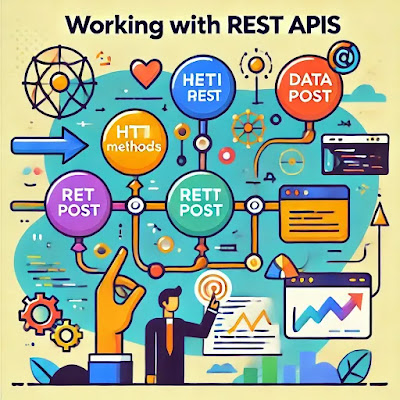Event Handling in JavaScript: A Practical Guide
Event Handling in JavaScript: A Practical Guide
JavaScript has become the cornerstone of modern web development, enabling interactive and dynamic web experiences. One of the fundamental techniques that brings life to web pages is event handling. Events in JavaScript are occurrences triggered by user actions or browser activity, such as clicking, scrolling, or pressing a key. By learning how to manage these events effectively, developers can create more interactive and responsive applications.
What Are Events in JavaScript?
In JavaScript, an event is any action that can be detected by the browser. Events can be triggered by a user interacting with the webpage, such as clicking a button or typing in a form field. Some events occur automatically when the browser performs certain actions, like loading a page or resizing the window. JavaScript provides built-in functionality to listen for these events and define custom behaviors to respond to them.
Common Types of Events
- Mouse Events: These are triggered by mouse actions such as clicking, double-clicking, hovering, and moving the cursor. Examples include
click,dblclick,mouseover, andmouseout. - Keyboard Events: Keyboard events are triggered by actions involving keys, such as pressing or releasing a key. Examples include
keydownandkeyup. - Form Events: These events are related to user interactions with form elements, such as input fields and buttons. Examples include
submit,change, andfocus. - Window Events: These events are triggered by the browser window itself, such as when a page is fully loaded or when the user resizes the browser. Examples include
loadandresize.
How to Add Event Listeners
Event listeners in JavaScript allow developers to define the behavior that occurs when an event is triggered. The most common method for adding an event listener is by using addEventListener, which binds an event to an element and runs a function when the event occurs.
Basic Syntax
element.addEventListener(event, function, useCapture);Here, element refers to the DOM element where the event is being listened for, event is the type of event (such as click), and function is the callback function that will be executed when the event occurs. The optional useCapture argument determines whether the event should be captured during the capturing or bubbling phase (explained below).
Example: Click Event
In the following example, we add a click event listener to a button. When the button is clicked, an alert box will appear.
const button = document.getElementById('myButton');
button.addEventListener('click', function() {
alert('Button clicked!');
});Event Propagation: Bubbling and Capturing
When an event occurs, it doesn’t just affect the target element; it can also affect its parent elements. This is known as event propagation, which occurs in two phases:
- Event Bubbling: In this phase, the event starts at the target element and bubbles up through its ancestors in the DOM.
- Event Capturing: In this phase, the event is first captured at the outermost element (the root) and propagates down to the target element.
Stopping Event Propagation
Sometimes, you may want to stop an event from propagating up or down the DOM. This can be done using the stopPropagation() method. Here’s an example:
element.addEventListener('click', function(event) {
event.stopPropagation();
});Event Delegation
In cases where you have many elements that need the same event handler, adding a separate event listener to each one can be inefficient. This is where event delegation comes in. Instead of adding listeners to each child element, you can take advantage of event bubbling by adding a listener to a parent element.
Example of Event Delegation
document.querySelector('ul').addEventListener('click', function(event) {
if (event.target.tagName === 'LI') {
alert('List item clicked: ' + event.target.textContent);
}
});In this example, an event listener is added to the parent <ul> element. When any <li> inside the <ul> is clicked, the event bubbles up to the parent, allowing us to handle all <li> clicks with a single listener.
Best Practices for Event Handling
- Use event delegation when dealing with multiple similar elements to minimize the number of event listeners.
- Remove event listeners when they are no longer needed to avoid memory leaks.
- Avoid complex logic inside event handlers that are triggered frequently (e.g., scroll events). Use techniques like debouncing or throttling to improve performance.
- Test on different devices: Ensure that events, especially touch events, work across both desktop and mobile platforms.
Removing Event Listeners
Removing event listeners is important for performance optimization, especially when dealing with large web applications. You can remove an event listener using the removeEventListener method.
element.removeEventListener(event, function);Note that to remove an event listener, the function passed to removeEventListener must be the same as the one passed to addEventListener. This means you cannot remove event listeners that are created with anonymous functions.
Example: Removing a Click Event
function handleClick() {
alert('Button clicked!');
}
button.addEventListener('click', handleClick);
button.removeEventListener('click', handleClick);Conclusion
Event handling is a fundamental concept in JavaScript that allows developers to create dynamic, interactive web pages. By understanding how to add, remove, and manage events efficiently, developers can enhance user experiences and build more responsive applications. Implementing best practices like event delegation, managing event propagation, and optimizing performance will ensure that your event-driven code runs smoothly and efficiently.



Comments
Post a Comment